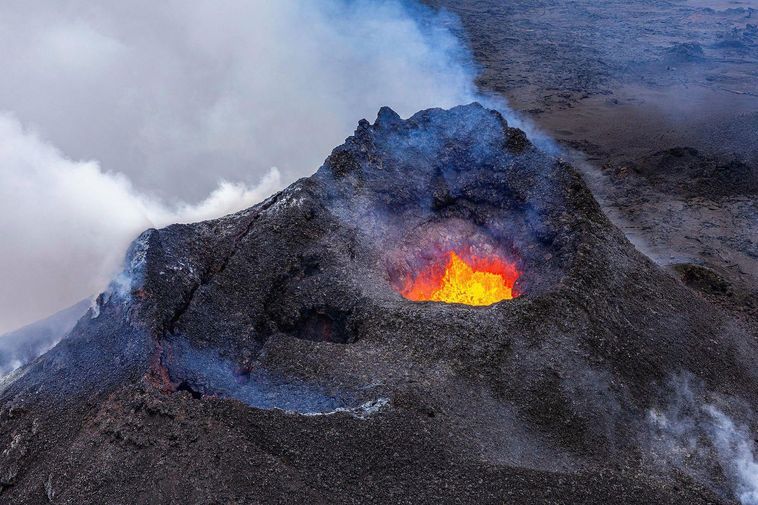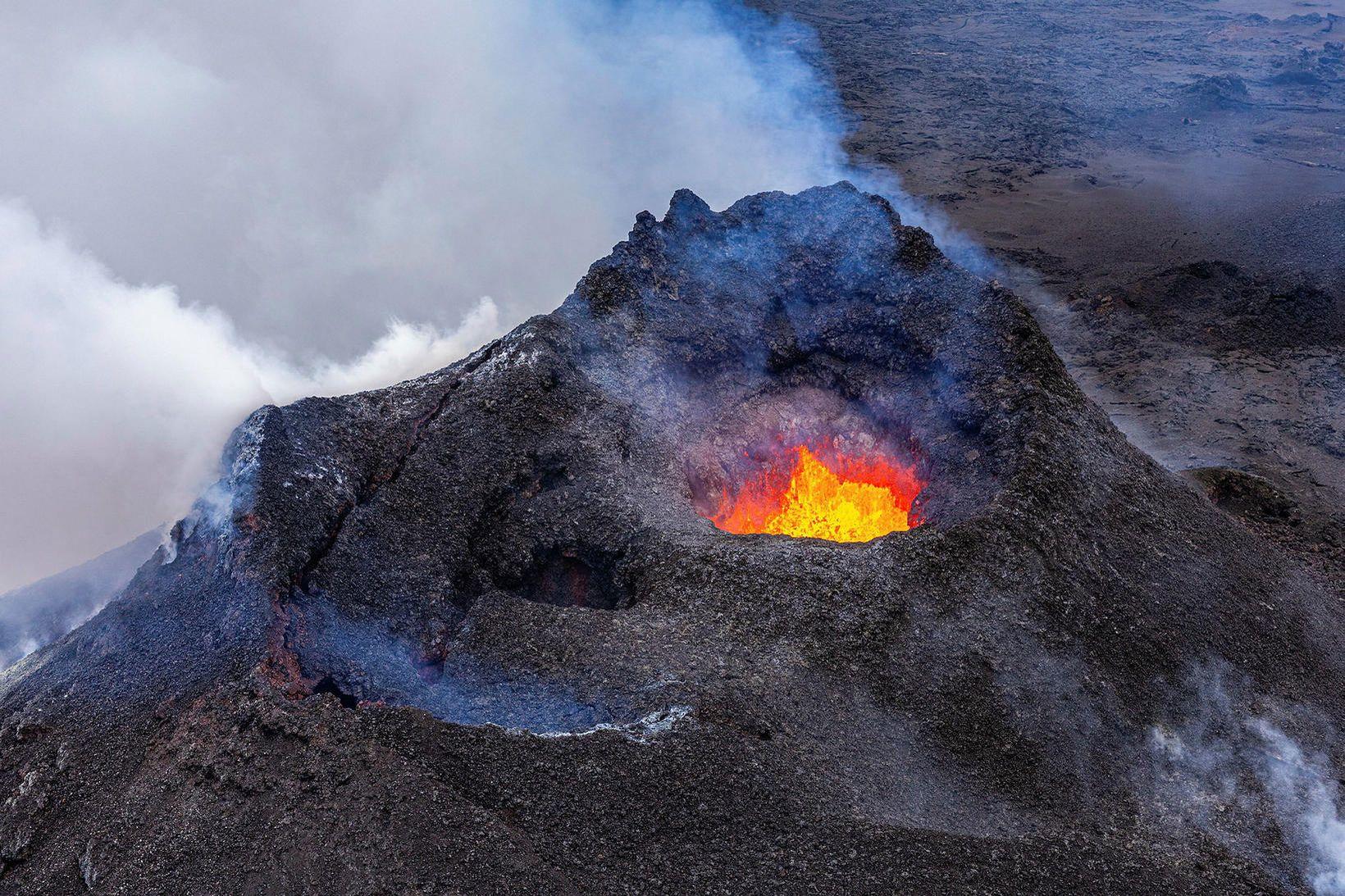From the most recent eruption in the Sundhnúkagígar crater row, which ended in early August.
mbl.is/Árni Sæberg
The volume of magma accumulated beneath Svartsengi has now exceeded the level it reached before the most recent eruption, and increased seismic activity on the Reykjanes Peninsula over the weekend may indicate that another eruption is approaching.
This is according to Benedikt Gunnar Ófeigsson, deformation specialist at the Icelandic Meteorological Office.
He says that the rate of land uplift has gradually slowed — a trend that has continued since the last eruption ended.
“The land uplift — or the volume of magma — has now surpassed what it was before the last eruption. However, it hasn’t yet reached the level it was before the one prior to that, since the last eruption occurred rather early,” Ófeigsson explained.
“We don’t yet know whether this means that a new threshold has been reached or exactly how the system behaves.”
Scientists have previously noted that when roughly 12 million cubic meters of magma accumulate, the likelihood of a new eruption increases — which was about the amount that erupted last time.
“It’s been relatively quiet seismically until this past weekend, when there was a little hiccup. That could be a sign that things are approaching some sort of limit, though we can’t say that for certain,” Ófeigsson added.

